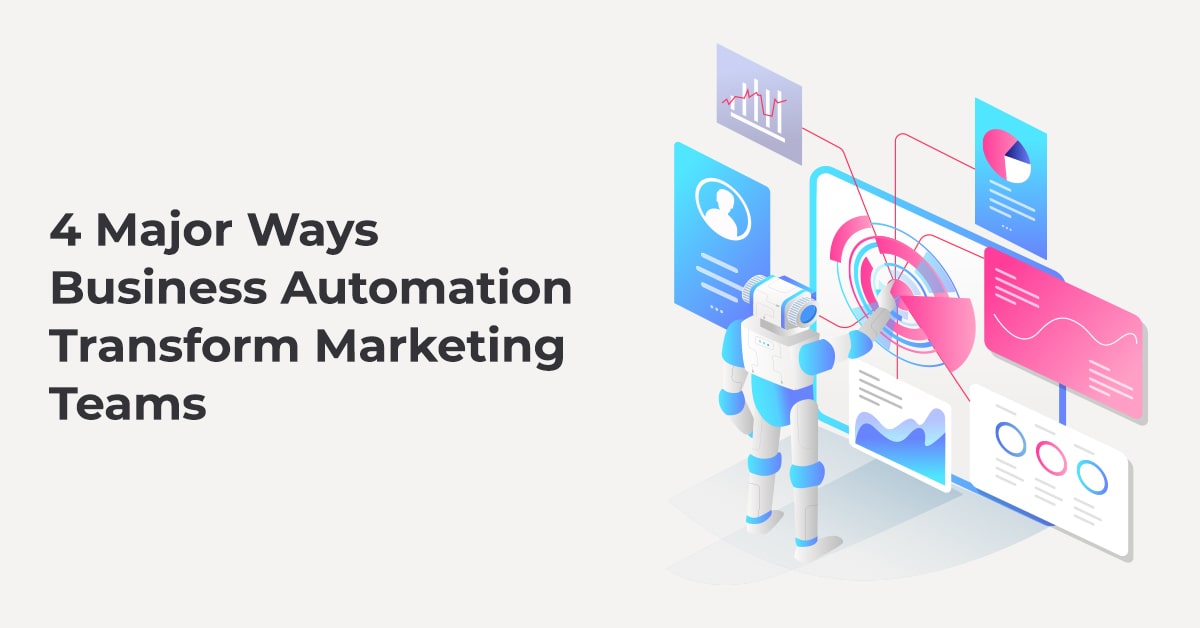4 Major Ways Business Automation Transform Marketing Teams

In the past few years, business automation has transformed the way marketing teams work in major companies around the world. Find out how it does this in four major ways.
Automation is a major concept that’s gaining traction lately in the business world. To those unfamiliar with the term, it’s the system of using technology— such as a software— to automate boring, manual, and repetitive tasks. Using automation, marketers could nurture leads, manage customer information, and achieve sales goals in just a few clicks, without breaking a sweat.
It’s also proven to reduce costs for the company, as well as improve employee productivity. And through the integration with customer relationship management (CRM), teams from different departments can focus on their respective tasks, while keeping themselves coordinated with the others.
What you should know:
Automation transformed the way companies capture leads and nurture them
It also made email marketing much simpler for marketing teams
With automation, data and analytics generation can be done at a glance
Overall, automating sales and marketing tasks improve employee well-being and company productivity (according to 43% of marketers).
How does business automation transform marketing teams? Check out these four cases of transformation:
1. It helped eliminate the manual recording of data from leads
Before automation, marketing teams had to manually approach strangers to convince them to make a purchase. They do this through telemarketing, handing out flyers, or even through making a sales pitch in public. But while all of that may still work nowadays, the increasing accessibility of the internet has transformed the way consumers behave, making online purchases likelier and more relevant.
Marketing teams have to study how consumers interact with businesses over the internet and identify sales opportunities from this— such as when a website visitor reads a blog of the business or subscribes to the weekly newsletter. This is where automation enters.
Instead of contacting that website visitor manually, automation allowed businesses to set up their landing pages to prompt visitors to fill in their contact information (mostly in exchange for something) using a lead magnet (e.g. industry reports, data, templates, documents, etc).
The information is then migrated into the CRM platform, where the website visitor can be labeled as a lead. The CRM user then has a choice whether to include that lead in a campaign for lead nurturing.
2. It made email marketing much, much simpler
Nurturing leads through email is one of the most effective ways to increase your sales. It helps improve sales conversion, reduce customer churn, and help with customer retention by building loyalty among potential and existing customers.
Using a drip email marketing strategy, companies can plan how they would engage customers throughout the buyer’s journey. And using CRMs’ automation, marketing teams can just relax and let the software do its job— sending out curated content to leads as they go through the sales pipeline.
3. It allowed marketing teams to generate data and analytics fast
With automation, marketing teams no longer have to manually determine the performance of their campaigns and how they’re doing vis-a-vis their sales goals. Marketing automation software can do that for them.
It can show them the key performance indicators (KPIs) of their campaigns— such as the open rate, the click-through rate, the bounce rate— and generate analytics for them in real-time instantly. This lets marketing teams, and the business in general, to make quick, strategic decisions to make the campaign more successful.
4. It boosted marketing teams’ well-being, as well as productivity
Doing boring tasks manually and repetitively throughout the year can get a little draining for marketing teams (well, any team, actually) and you can do away with this through automation.
In fact, globally, marketing and sales automation software was worth $6.81 billion in 2019, according to Fortune Business Insights. It’s also projected to grow $18.49 billion in 2027. What does this mean? It means companies are now seeing the importance of automation and how it can impact company productivity at the end of the day.
About 43% of marketers also reported that using automation improved their productivity, and others (41%) said it increased their ROI and improved the way they manage their campaigns (40%).
Now is the time to transform your marketing team
Don’t let your competition get the headstart. Transform your marketing team now with Saphyte’s Digital Ecosystem. Book a free demo here or get started here.